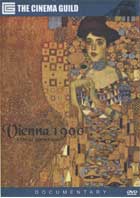
Vienna 1900 2006
Distributed by Cinema Guild, 115 West 30th Street, Suite 800, New York, NY 10001; 212-685-6242
Producer n/a
Directed by Valerie Manuel
DVD, color, 52 min.
Sr. High - Adult
Art, Artists, Art History, Gustav Klimt
Date Entered: 11/13/2006
Reviewed by Susan Awe, Parish Memorial Library for Business & Economics, University of New Mexico, Albuquerque, NMThis documentary explores the metropolis of Vienna at the turn of the nineteenth century and the unique artistic movement that engendered the work of artists like Gustav Klimt, Egon Schiele, Koloman Moser, and Oskar Kokoschka. The work of these four painters is showcased with clear, gorgeous photography and their striking work, often called the Vienna Secession Movement, sums up this boldly inventive period. Part of Art Nouveau, the Secession Movement included literature, architecture, and fine art. This time and place also saw the publication of Freud's first writings. Much of the documentary deals with Gustav Klimt, whose portrait, “Adel Bloch-Bauer” sold for $135 million this year, a record amount for a painting. Interspersed throughout the film, comments and analyses from specialists like, Christine Lecerf, an Austrian literature historian, Elisabeth Roudinesco, historian and biographer of Freud, and Serge Lemoine, president of the Musee d’Orsay, are used to expand on the ideas presented. Also used effectively is the juxtaposition of modern café and crowded street scenes of Vienna with scenes depicted in the paintings. In this film, viewers will discover the distinctive personalities of these artists as well as learn more about the unique time and place in which they lived. For two decades, as they moved from Symbolism to Expressionism, viewers learn about the new aesthetics in portraiture, landscape, and allegorical painting that were introduced.
Video techniques and effects are as outstanding as the still photography. The close-up views of the great paintings and shots of important architectural elements and buildings make the viewer feel that they are involved in the Movement. Editing was judicious and effective. The occasional subtitled commentary did not interfere with the art or its message. The film is suitable for adults of all ages. School, academic and public libraries will want purchase to illustrate the importance of this period in art and contemporary Western culture.